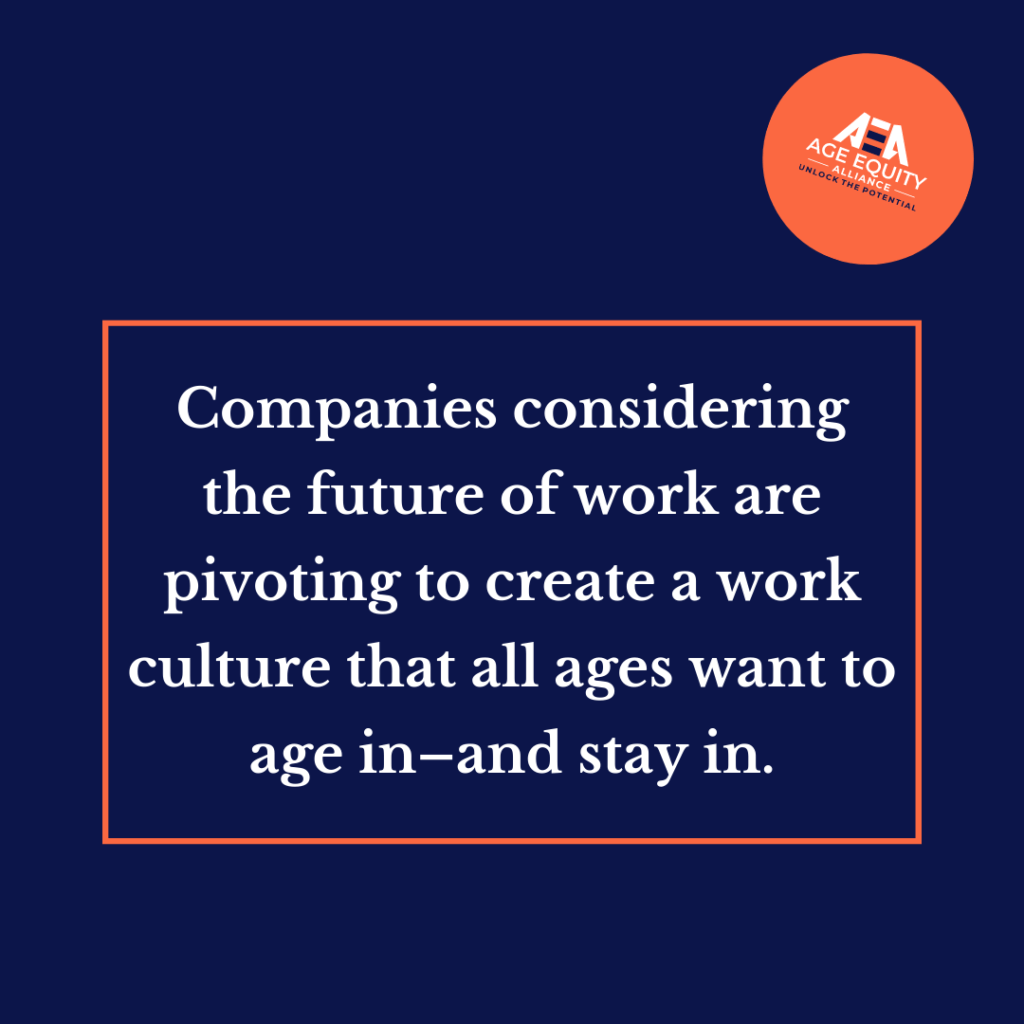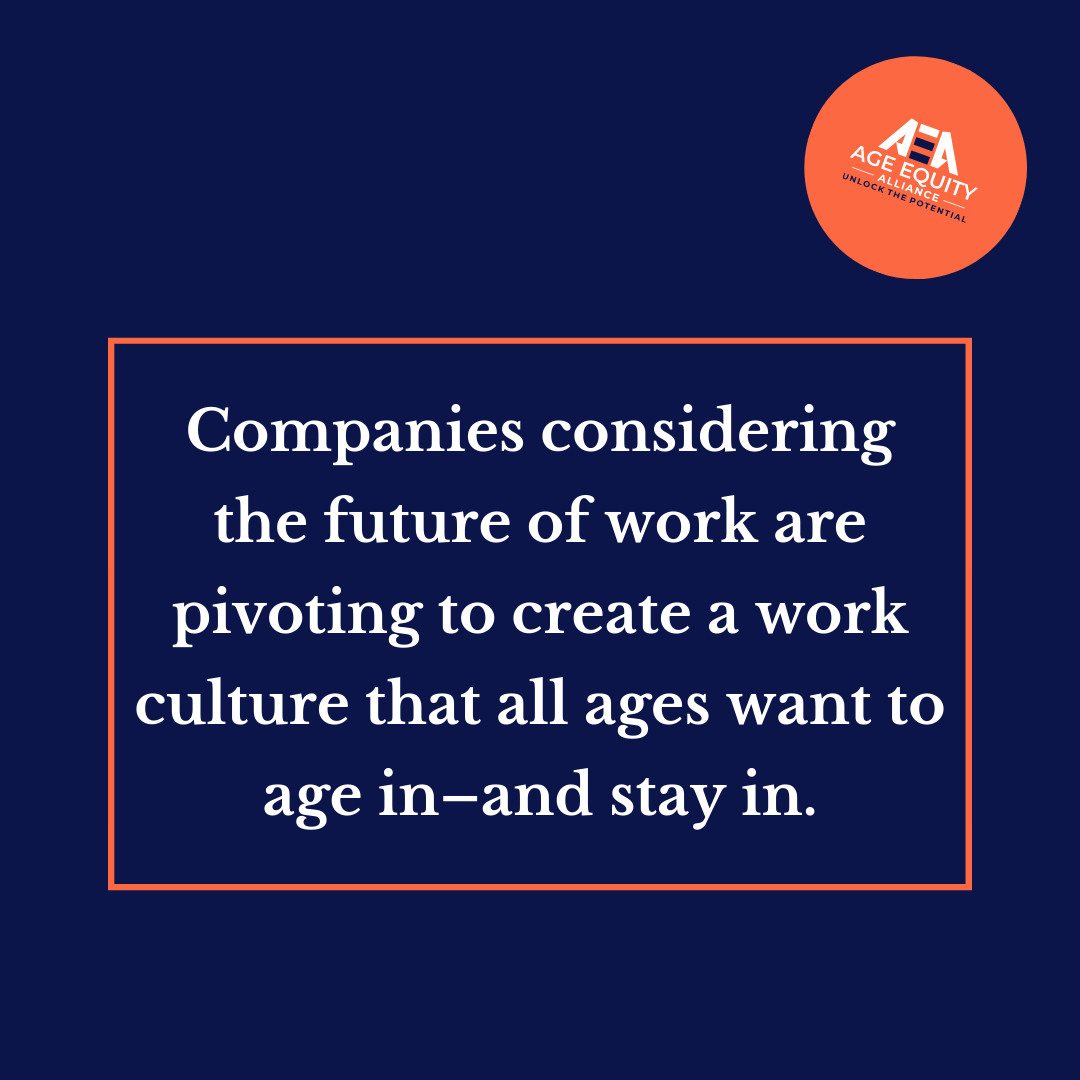There are now as many people turning 80 as there are babies being born.
As a result, talent is becoming a scarce resource. Companies considering the future of work are looking to pivot to create a work culture that all ages want to age in–and stay in. That means looking beyond outdated retirement norms to fill the gaps. It also means understanding the impact of longevity–not only for older workers, but across the age spectrum.

People who live longer, healthier lives may need or want to work longer to support their continued longevity. As a result, the workplace is experiencing increasing pressure to change. Instead of a retire by 60 ideology, there is the natural desire and necessity of a 60- to 80-year career.
A thriving economy needs workers. Fewer births mean fewer workers. Along with workplace age discrimination and less worker immigration, U.S. companies can’t find enough workers to fill vacancies.
The challenge is not only about giving all ages access to employment opportunities so that people remain self-reliant. It is also about economic business sustainability. How can companies stay competitive if they don’t have the talent they need?
When companies focus on benefits inherent in longevity, employees receive the training and education they need to support an age-inclusive workplace. They learn to recognize age assumptions and hold themselves and others accountable for change. Leaders begin tracking age demographics to better understand how they hire, train, promote, and retain all aged talent.
The last few years have forced companies to make accommodations on a massive scale. Once leaders wake up to the shifting age demographics, the urgency to pivot will accelerate. Companies already there will undoubtedly have the advantage.


Leave a Reply